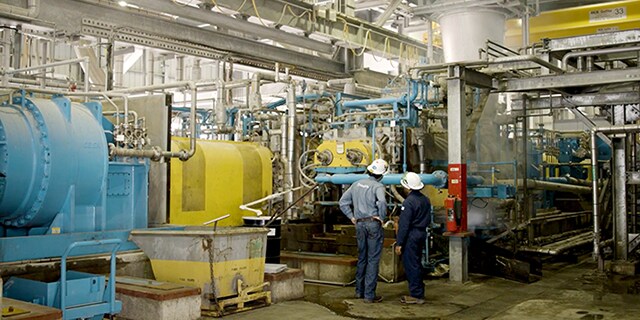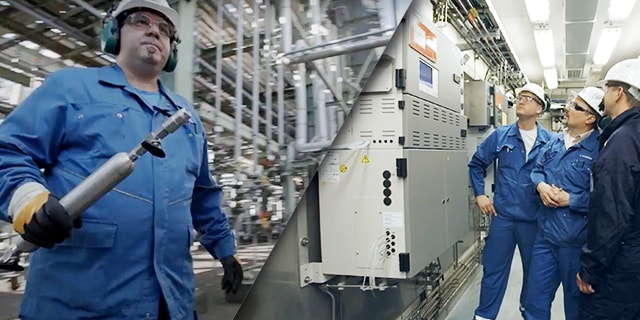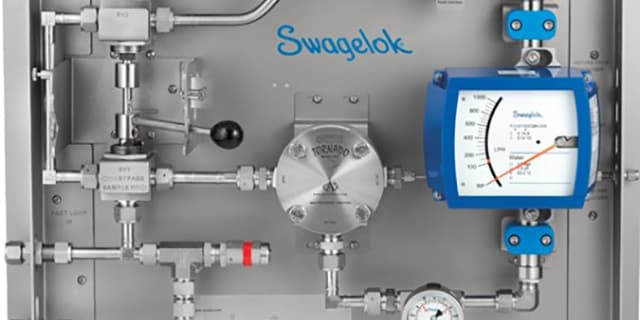How Two Major Refineries Solved Gasoline Blending Challenges

Saving Millions of Dollars by Reducing Gasoline Blending Costs
For refiners of finished gasoline and diesel fuels, ensuring that the final product meets anticipated specifications is critical. The gasoline blending process, where fuels are blended with octane to meet differing performance tiers, plays an important role in achieving specification alignment and maximizing refinery profitability. Timely and accurate process analysis during gasoline blending is essential, as it enables refiners to optimize treat rates for each performance tier and their respective price points.
Accomplishing timely, accurate process analysis is not always easy, however, and when problems arise, they are not always simple to identify. Delayed or inaccurate results from a process analyzer can lead to millions of dollars in losses for refiners who cannot charge premium prices because they cannot validate the composition of the gasoline quickly and confidently enough. It can also result in wasted time by technicians performing unnecessary maintenance, such as frequent filter swaps, in efforts to fix issues.
As two major petroleum refining companies discovered, however, collaborating with sampling experts and implementing optimized analytical systems can be the key to maximizing sampling accuracy and timeliness and minimizing “giveaways.”
An Analytical Solution to Gasoline Blending Issues in Texas
THE PROBLEM
At a major gasoline refinery, one of the largest U.S.-based refiners sensed that there was an issue with a major gasoline blending unit.
“One of their analytical supervisors approached us with a problem they were experiencing with their analytical system for the unit,” said Jason Alexander, director of services, Swagelok Texas Mid-Coast. “He believed the system was experiencing time delay, but they didn’t know exactly how long that delay was. And excessive time delay can be a big problem.”
Time delay accounts for the total amount of time it takes for a sample—gasoline, in this case—to travel from the tap in the process line to the process analyzer. Minimizing time delay and receiving accurate measurements is critical for maximizing profitability. If an engineer assumes time delay is equal to one minute, for example, but it is actually two hours, analyzer readings may no longer be relevant or purposeful. That extended time delay leads to an inability to validate octane levels in a fuel, and thus an inability to charge accurate rates to customers.
Time delay can be a big problem. You can lose millions of dollars in half an hour.
“If you’re blending a high-octane product and then switch over to a lower-octane product, you need analytical confirmation that the sample that you're pulling reflects the change that you made in the process,” Alexander said. “So, if it takes 10 minutes for your analytical system to recognize that you've lowered the octane treat rate, you have to price the product at that lower-grade rate for those 10 minutes until you’ve confirmed the change. But if instead of 10 minutes, it takes 30, that’s a big deal—you can lose millions of dollars in that half hour.”
SOLUTION
Swagelok field engineers met with the customer and performed analytical surveys. Throughout that collaborative process with refinery teams, Swagelok helped uncover a range of challenges to be overcome, including:
- Pressure variation at the sampling tap
- No variable area flowmeter
- Insufficient flow to purge second-stage filters and ½” header
- Insufficient flow control elements, with little to no visibility of pressure and flow
- An excessively long sample transfer line
- Excessive filter volumes
- Several unnecessary deadlegs on lines leading to the analyzer
- No visibility to the sampling probe
- Unoptimized grab sampling station
“After we presented our findings, we were able to collaborate closely with the refinery’s analytical team to identify potential solutions,” Alexander said. “Prior to this project, we had already built a good relationship with this customer. That implicit trust was critical—they knew we were truly helping to solve a challenge.”
Swagelok delivered several new grab sampling and analyzer panels, as well as a centrifugal filtration setup that helped further enhance analyzer accuracy. With these improvements, Swagelok was able to help cut time delay down to a mere 56 seconds, adding up to millions of dollars in savings. As a result, the refiner intends to replicate the solution at its other facilities throughout North America.
“It’s the kind of relationship we work to build with every customer,” Alexander said. “And the results speak for themselves.”

$44 Million in Savings in California
THE PROBLEM
In Northern California, another major gasoline refinery operated by a different multinational petroleum company was experiencing a similar issue. As a result of excessive time delays in analyzing samples, the refinery was experiencing $60 million in giveaways due to excess octane treatment of finished gasoline products.
Based on Swagelok process analyzer sampling system training they had previously attended and knowledge of solutions Swagelok Northern California’s field engineers had developed for a sister facility, team members at the refinery consulted Swagelok Northern California for a solution to the issue.
Reducing time delay enabled the refinery to slash octane giveaway costs from $60 million to $16 million.
SOLUTION
“Knowing that a customer had just resolved a similar issue in Texas, our California team was able to collaborate with Swagelok Texas Mid-Coast to replicate the solution for a different customer,” said Deb Carpenter, oil, gas and chemical market manager, Swagelok.
The results? Reducing time delays enabled the refinery to slash octane giveaway costs from $60 million to $16 million.
“Both projects highlight the depth of expertise that Swagelok can provide based on our experience around the globe and the way Swagelok engineering services professionals collaborate to create value for the organizations we serve,” Carpenter added. “We were able to apply what was learned in Texas and extend that solution—it’s been a real difference maker. We’re actively exploring additional opportunities to solve this type of challenges at other refineries around the world.”
Swagelok engineering services professionals work with customers like these every day to identify and address issues across the globe. You can find more stories about how these fluid handling and sampling professionals have helped solve critical issues here on Swagelok Reference Point, as well as extensive advice regarding how you can avoid or address common fluid system and sampling system issues. Need help overcoming a specific challenge in your facility? Learn about how local specialists can help you, too.
Related Articles

How INEOS Achieves Analytical Instrumentation Precision
INEOS depends on analytical accuracy to serve its global customers with high-quality chemical products. Learn why the company trusts Swagelok for quality instrumentation system components, service, and training.

Analyzing Your Sampling Needs
Trying to determine whether grab sampling or online analysis is the best option to monitor your process conditions? We put together a convenient checklist to help guide you to a solution that suits your operations.

4 Areas to Inspect When Measuring Time Delay in Sampling Systems
In a process analyzer sampling system, there is always a time delay before you obtain a reading. However, underestimating this time delay can lead to inferior process control. Learn which four areas you should closely inspect to diminish time delays.

